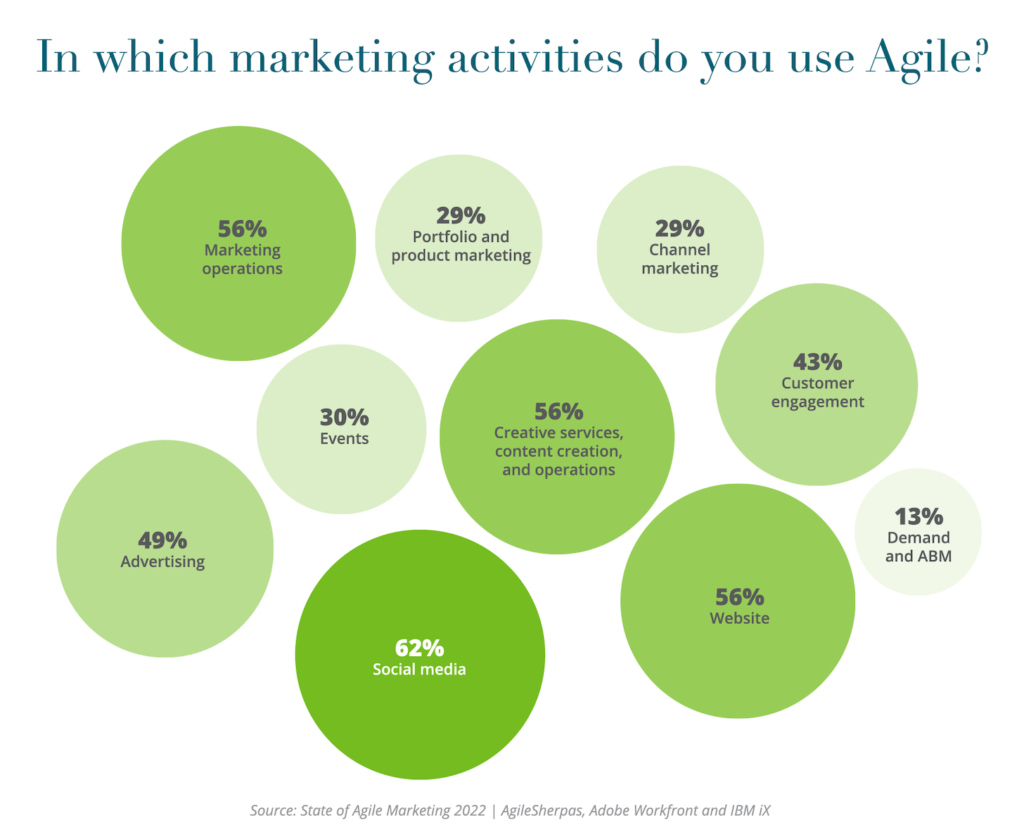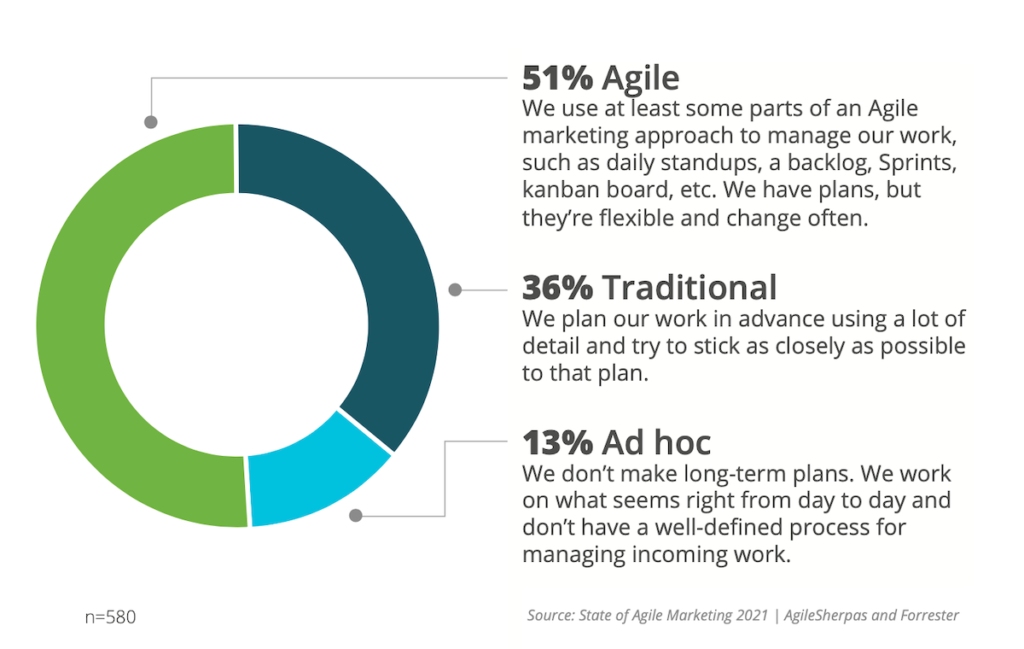Razorfish just released a great new report, Nimble: Publishing in the Digital Age, written by Rachel Lovinger. The target audience is clearly large publishers and mega media companies, but there are important trends here that are relevant to everyone who thinks of distributing content on the web — e.g., anyone in marketing.
The three key points that pop out to me — particularly because I keep seeing them in a lot of posts and discussions these days:
1. The concept of “the web site” is becoming less important than the underlying content and its social propagation.
People now consume online content on a variety of devices, from their computers, their iPhones and Android phones, and new tablets like the iPad. They consume content not necessarily from the site of the content producer, but from social media hubs such as YouTube, social networks such as Facebook, aggregators such as Alltop, and a wave of social sharing services such as Twitter, Buzz, LinkedIn from which it is reblogged and reposted (or reshared as the term du jour).
You need to design your content — and the process and metrics by which you generate and maintain that content — to be effortlessly absorbed into this malleable and organic distribution engine in the cloud. It’s a different paradigm than the closed walls of the 1990’s web site.
Quoted in the report is Nic Newman of the BBC:
You can’t afford to [create] a piece of content for any one platform. Instead of crafting a website, you have to put more effort into crafting the description of an asset and the different bits of an asset, so they can be reused more effectively, so they can deliver more value.
2. Structured data and metadata around content are becoming increasingly important.
As Facebook’s Open Graph protocol is demonstrating, even just a little bit of semantic markup associated with your content can go a long way in making your content more friendly to find, share, and curate. This makes it much easier for you — and others — to adapt your content in a variety of containers, beyond the static information architecture of your web site.
Forget the fancy names of “semantic web” or “linked data.” Associating structured data with your content assets lets you take advantage of Open Graph, Google RichSnippets, Yahoo Search Monkey, and a new generation of agents such as Siri. Disseminating your content with metadata through APIs enables developers to spread the seeds of your brand in a variety of mash-ups and apps. Sharing your data sets in collaborative venues such as Factual and Infochimps helps build relationships with the world of analytic power users, improve your data quality, and turn those dusty data silos into tools for advocating ideas and brands.
And with the coming data explosion (already 281 exabytes of online data in 2009!), this type of self-guiding roadmap within and around your assets will soon be essential for even you to find and use the right content in the right place.
3. Content producers must become much more nimble (i.e., agile).
When many people come to the same conclusion from independent streams of research, you know a major movement is in progress. Rachel’s overarching advice to publishers is to push to be more nimble — or as I’d call it, more agile. And, as you’ve probably noticed, a lot of people have been talking about business agility this year.
I’ve been banging the drum for more agility in marketing — such as a call for an agile marketing manifesto — because in a world where everything is in constant flux, your only reliable source of competitive advantage is your ability to adapt. Fast. That’s easy to say, but it requires cultural and managerial shifts that are still quite foreign to most organizations. It’s a change in metabolism that needs to be taken seriously and mandated from the highest executive levels.
As Rachel writes in her report:
To succeed as a digital content producer you need to be nimble. Many companies will say that they’re nimble, but very few actually are. Being nimble is about the ability to adapt quickly to the new challenges and opportunities in today’s media ecosystem; things like the explosion of new media devices, the world-domination of social networks, and consumers’ growing expectation of first-class digital experiences.
Being nimble is not just about an organization. It’s about the industry’s business models. It’s about production processes. It’s about the content itself.
Nimble is a thought-provoking report, well-worth reading and considering how it applies in your domain.
(It also includes a reference to my post on business models for linked data and Web 3.0, which was inspired by discussions and feedback from Rachel as well.)



Thank you, THANK YOU. Your blog post is soooooo much easier to read than Razorfish’s too-cute 60-page report. I did read it but hated the experience. Ok so I’m a dinosaur, but I think their packaging obscured the message.
Hi, Maria — I guess this is a good example of “remixing” in action. 😉
Nice post, Scott!
A question: what do you think about the Open Data movement applied to Data Web Marketing in general?
I mean, in other words: the fact that Gov is making a strong effort in this direction, helps the general attitude of organizations towards the idea of putting data IN the Web and not only on the Web.
Because instead of closing data with a logical layer ( data with API applied ), we can have the raw data, also.
With the metadata applied to, of course.
There is a lot of potential, thinking on social objects instead of websites and pages…
Anyway, interesting times .)
Hi, Matteo — thanks for the great comment.
I’m a big fan of the potential of semantic web technologies and the linked open data movement. I remain confident that sooner or later that will be where these different data marketing trends converge.
In the short-term, I’m happy that people are even thinking about data at all. It takes some getting used to the idea of sharing data rather than hoarding it. As businesses and marketers start to realize the potential of sharing this data to reach new people, strengthen relationships with prospects and customers, and build their brand, then the real power of standardized linked data will become apparent.
I sometimes think that the semantic web is a spectacular solution to a problem that doesn’t yet exist — at least outside of IT or certain scientific communities. People need to want to share data at a large scale and see the benefit of it first. Only once that desire exists does the logical next question arise: what’s the best way to accomplish that? When that question arises, the semantic web will take off like a rocket.
As you say, interesting times indeed!
I’ve noticed that in fact: we make websites to talk to the Market and we spend a lot to make them findable…
But websites are a minimal form of data about us: i’m thinking about RSS, that makes our sites more connected with the stream of the Web.
Why we are on the Web? To share something about our lifes. ( our work and not only of course )
Why not sharing with the Web rules ( linked data principles ) and become part of the ecosystem instead of using a sort of very long supply chain? .)
Or why not?
Probably the point of Eureka is the VRM scenario, i’m thinking about it in the last months, seeing the global privacy dilemma.
And the last post of Doc Searls is a pre-Eureka point:
-> Managing relationships, not each other
Data Web Marketing and VRM together: a change in the paradigma of the Market, i think.
Ops, this is the link:
http://blogs.law.harvard.edu/vrm/2010/05/24/managing-relationships-not-each-other/
Great post as usual.
Web Sites are going to become “Data Spaces”. Linked Data fidelity per Data Space will vary, but over time folks will realize that Serendipitous Discovery and Agility are inextricably LINKED. End game: a dense Web of Structured Linked Data where Serendipitous Discovery Quotient of Resources (Documents) increases exponentially.
Data Access Interfaces into Data Spaces will be increasingly uniform and more oriented towards the intrinsic power of HTTP i.e., the ability to send powerful messages to Data Spaces that are Data Representation agnostic while based on a universal Entity-Attribute-Value model [1].
Links:
1. http://bit.ly/bmdv5N — Data 3.0 Manifesto
Kingsley
@kingsley: great annotations.
What do you think about the value around the concept of Data 3.0 and these dense LINKED Web? I mean after the Metcalfe law, is there anything so simple to simplify the idea to the Market?
http://blogs.sun.com/bblfish/entry/rdf_and_metcalf_s_law
( of course not only applied to rdf model )
Thanks for the link to Project VRM (vendor relationship management), Matteo!
I agree that it’s powerful shift in paradigm waiting to happen. Although many vendors will likely resist, as it gives up some of the leverage they have today, I believe that a new generation of vendors will turn this to their advantage. It’s like a data/process version of the social media revolution. Those who embrace it as a way to forge better, deeper relationships with customers — by embracing genuine transparency and customer-centric practices — will thrive in the next wave.
Kingsley, I love the Data 3.0 Manifesto!
For some reason, the initial link you posted didn’t seem to resolve, but here’s an updated one that does:
http://bit.ly/crRl1c
Scott – Thanks for this — it is so helpful in doing strategic thinking about future iterations of web sites, content, etc. Any words of wisdom on how to evaluate web content management/web engagement management systems? who is talking about products that might support the agile model you describe?